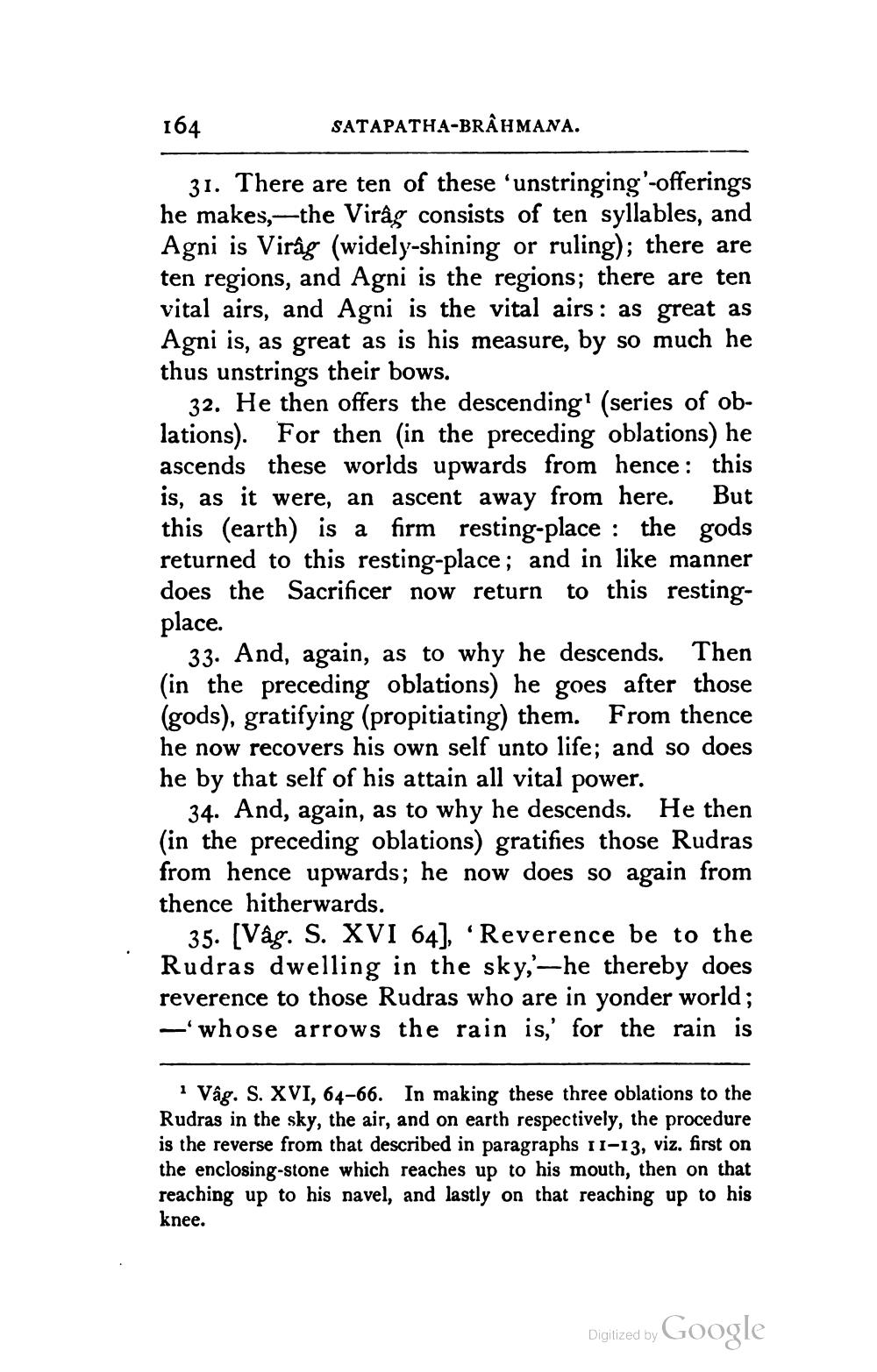________________
164
SATAPATHA-BRAHMANA.
31. There are ten of these 'unstringing'-offerings he makes-the Virág consists of ten syllables, and Agni is Virág (widely-shining or ruling); there are ten regions, and Agni is the regions; there are ten vital airs, and Agni is the vital airs : as great as Agni is, as great as is his measure, by so much he thus unstrings their bows.
32. He then offers the descending(series of oblations). For then (in the preceding oblations) he ascends these worlds upwards from hence: this is, as it were, an ascent away from here. But this (earth) is a firm resting-place : the gods returned to this resting-place; and in like manner does the Sacrificer now return to this restingplace.
33. And, again, as to why he descends. Then (in the preceding oblations) he goes after those (gods), gratifying (propitiating) them. From thence he now recovers his own self unto life; and so does he by that self of his attain all vital power.
34. And, again, as to why he descends. He then in the preceding oblations) gratifies those Rudras from hence upwards; he now does so again from thence hitherwards.
35. [Vâg. S. XVI 64), 'Reverence be to the Rudras dwelling in the sky,--he thereby does reverence to those Rudras who are in yonder world; —'whose arrows the rain is,' for the rain is
1 Vâg. S. XVI, 64-66. In making these three oblations to the Rudras in the sky, the air, and on earth respectively, the procedure is the reverse from that described in paragraphs 11-13, viz. first on the enclosing-stone which reaches up to his mouth, then on that reaching up to his navel, and lastly on that reaching up to his knee.
Digitized by Google




